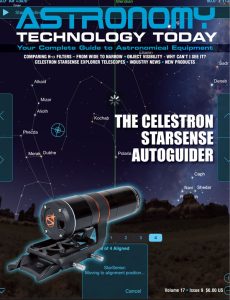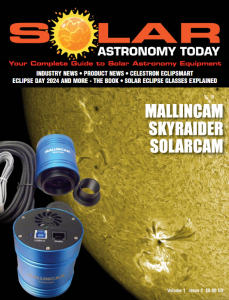The New Consolidated Atlas of the Near Side of the Moon Volume 1: Northern Hemisphere by Fredrick toe Laer offers a 133 page book that provides a unique look at features about the Moon that used to have an official name, but have been lost over time.
 As the author notes, “Every so often an observer of the Moon will find him/herself looking for the name of a certain feature that is not noted on one map or another. At some point it becomes apparent that the current, official, naming convention of the Moon leaves many features unnamed. More importantly; it leaves many features unnamed that previously used to have names!”
As the author notes, “Every so often an observer of the Moon will find him/herself looking for the name of a certain feature that is not noted on one map or another. At some point it becomes apparent that the current, official, naming convention of the Moon leaves many features unnamed. More importantly; it leaves many features unnamed that previously used to have names!”
He continued, “There are many fine atlases of the Moon, each serving their own purpose. Some show drawings of the Moon, giving the map relevance no matter the actual light and shadows of any particular day. Others have based the maps on photographs, showing each detail exactly as seen through the telescope or on photographs (depending on the optical system used). However, to date I have found no atlas that combines the naming of the modern naming convention, completed with the old names for those features that currently lack an official name to create maps that have as many features named as possible for observers to note and share their observations.”
The atlas identifies 3,454 features on the Northern Hemisphere alone, 2,584 of these are official IAU approved names. And there are 859 features whose names lost their official status in the 1970’s and have remained undesignated in most current atlases since. As a note, the book is purely an atlas showing the positions and names of over 3400 features on maps. It does not provide background information on the geology of the Moon itself.
You can learn more and purchase The New Consolidated Atlas of the Near Side of the Moon Volume 1: Northern Hemisphere here.

 And to make it easier for you to get the most extensive news, articles and reviews that are only available in the magazine pages of Astronomy Technology Today, we are offering a 1-year magazine subscription for only $6! Or, for an even better deal, we are offering 2 years for only $9. Click here to get these deals which only will be available for a very limited time. You can also check out a free sample issue here.
And to make it easier for you to get the most extensive news, articles and reviews that are only available in the magazine pages of Astronomy Technology Today, we are offering a 1-year magazine subscription for only $6! Or, for an even better deal, we are offering 2 years for only $9. Click here to get these deals which only will be available for a very limited time. You can also check out a free sample issue here.
The Sun is more active than it’s been in years and if that’s not enough, we have the upcoming Total Solar Eclipse on April 8, 2024! If you’d like to learn more about the technology behind solar observing, solar imaging and more, you can check out our new monthly magazine – Solar Astronomy Today. It’s free to read, no subscription needed and available here. And if you are preparing for the upcoming eclipses and want to know your equipment options from solar glasses to the most out of this world solar viewing and imaging options, check out our free publication – The Definitive Guide to Viewing and Imaging the Sun – simply click here and enjoy reading!

